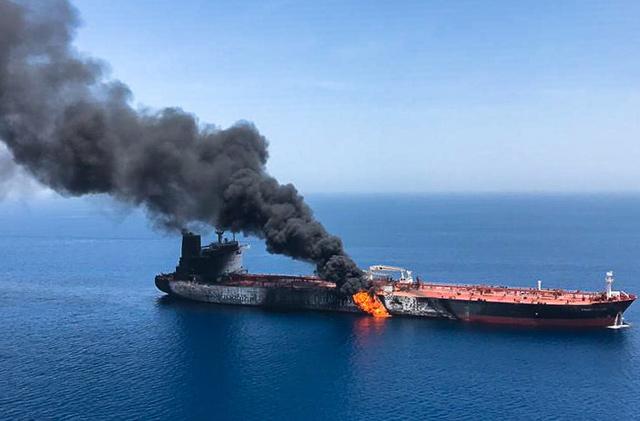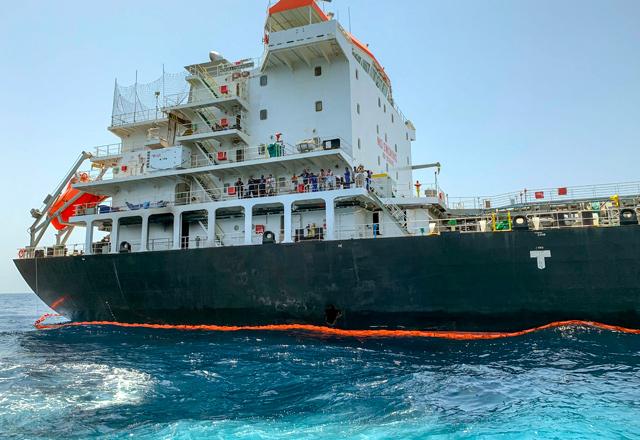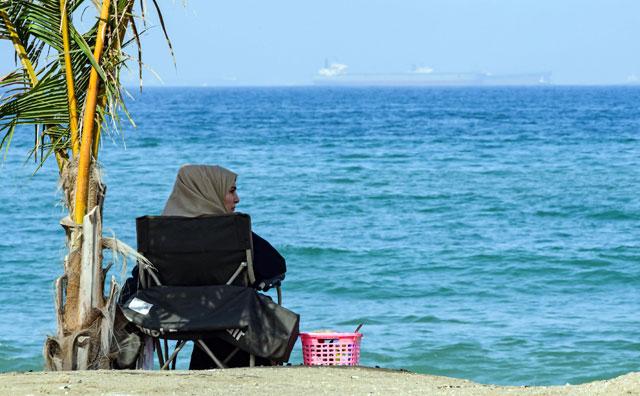You are here
What we know about the Gulf tanker attacks
By AFP - Jun 14,2019 - Last updated at Jun 14,2019
NICOSIA — Suspected attacks left two tankers in flames in the Gulf of Oman on Thursday, bumping up oil prices and further raising regional tensions triggered by a bitter US-Iran stand-off.
The ships were struck in the same strategic sea lane where four oil vessels were sabotaged last month in attacks Washington blamed on Tehran.
Amid rising fears of a conflict, here is what we know:
What happened?
In the early hours of Thursday, two vessels transiting through the Strait of Hormuz towards the Indian Ocean caught fire.
The Norwegian-owned Front Altair tanker was hit by three explosions, according to the Norwegian Maritime Authority.
Meanwhile a security incident, involving the Japanese-owned ship Kokuka Courageous prompted a “full-scale emergency response”, Singapore-based BSM Ship Management said.
The US Fifth Fleet said its warships had received distress calls from both vessels following a “reported attack”.
The Front Altair incident took place at 8:50am Iranian time (04:20 GMT) 46 kilometres off Bandar-e-Jask in southern Iran, Iranian state media reported.
The Kokuka Courageous caught fire at 9:50am, 52 kilometres off the port, it added.
Iran said its navy had rescued 44 crew members from the two vessels, which were carrying highly inflammable material.
The Front Altair was reportedly still burning late on Thursday, but the fire on the Kokuka Courageous was extinguished, said an Iranian official involved in the rescue operation.
The Front Altair was carrying ethanol from Qatar to Taiwan, while the Kokuka Courageous was carrying methanol from Saudi Arabia to Singapore, Iranian state media said.
Who was behind the explosions?
There has been no claim of responsibility for the blasts and international media reports of a “torpedo attack” were not confirmed.
Both ships have indicated the attacks originated from the surface, said maritime security company Dryad Global.
But it said reports from the Front Altair indicated its hull was breached “on the starboard side partially below the waterline”.
A starboard attack would mean the involvement of Iran or a proxy was a “real possibility”, Dyrad Global said.
However, it said, it would be “surprising” for Tehran to conduct such “bellicose” actions while its economy is reeling from US sanctions — or to knowingly target a Japanese ship while hosting Japan’s Prime Minister Shinzo Abe.
Global reactions
Iran’s top diplomat also voiced incredulity over the timing of the incident, which came as Abe met Iran’s supreme leader Ayatollah Ali Khamenei in a bid to ease soaring tensions between Tehran and Washington.
“Suspicious doesn’t begin to describe what likely transpired this morning,” Foreign Minister Mohammad Javad Zarif Tweeted.
Global oil prices surged by 4 per cent immediately after reports of the attacks.
UN chief Antonio Guterres strongly condemned the “security incident” and said the world could not afford a major confrontation in Gulf.
The European Union called for “maximum restraint” to avoid a regional escalation.
Sensitive location
The Gulf of Oman lies at the eastern end of the strategic Strait of Hormuz, a narrow channel that is a chokepoint for more than a third of the globe’s seaborne oil exports.
Iran has repeatedly threatened to close the Strait in the case of a military confrontation with the United States.
Thursday’s incidents come a month after four oil tankers — two Saudi, one Norwegian and one Emirati — were damaged in still unexplained attacks off the nearby UAE port of Fujairah.
US National Security Advisor John Bolton said Iranian mines were almost certainly behind the May 12 attacks, but declined to provide evidence.
The UAE said last week that initial findings of a five-nation investigation indicated a state was likely behind the attacks, but added there was no evidence yet of Iranian involvement.
The stakes
After last month’s sabotage attacks, Iran-aligned Houthi rebels in Yemen attacked a major Saudi pipeline with explosive-laden drones, closing it down for two days.
Washington had on May 5 sent an aircraft carrier group and B-52 bombers to the region over Iranian “threats”.
On May 8, Iran said it would stop respecting some limits on its nuclear activities agreed under a landmark 2015 deal with world powers, since abandoned by the US.
A week after the May 12 attacks, US President Donald Trump warned that if Iran attacks American interests “that will be the official end of Iran”.
Zarif said “genocidal taunts” would not “end Iran”.
Senior International Crisis Group analyst Elizabeth Dickinson on Thursday called the emerging pattern of attacks a “dangerous moment”.
“Any miscalculation or misunderstanding risks a spiral toward more direct confrontation,” she told AFP.
Related Articles
DUBAI — Suspected attacks left two tankers ablaze in the waters of the Gulf of Oman on Thursday, sparking fears of a broader conflict and se
FUJAIRAH, United Arab Emirates — A Japanese tanker attacked in the Gulf of Oman last week was damaged by a limpet mine resembling Iranian mi
DUBAI — Two damaged tankers arrived safely Sunday at locations off the Emirati coast after they were rocked by explosions in Gulf waters, in



















